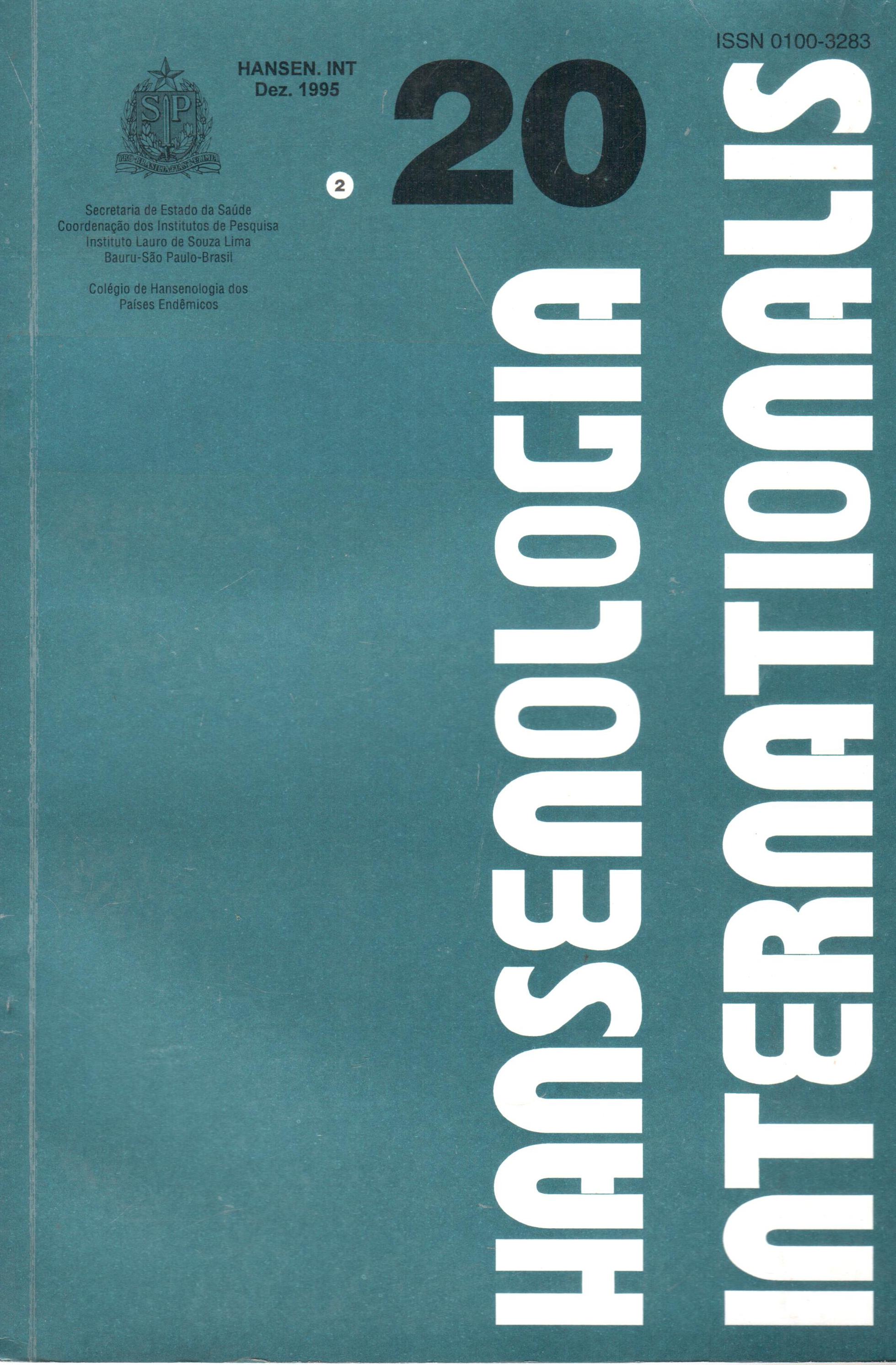Abstract
The authors present the clinical side effects produced by drugs used in multidrug therapy scheme standardized by World Health Organization for Leprosy disease. The study encompasses the experience in eight years with a total of 980 patientes, 496 (50%) of which were allocated in the
paucibacillary leprosy scheme and 484 (49.3%) in the multibacillary scheme. Side effects were observed which where attributed to the drugs that were used - Rifampicin, Dapsone and Clofazimine in 18 (1,8%) of the cases. Among the paucibacillary patients the side effects were observed in 10 (2%) and among the multibacillary patients in 8 (1.6%). In all the cases the standard scheme was adapted thus allowing a continuation of the treatment.
References
2. BECK-BLEUMINCK, M. Operational aspects of multidrug therapy. Int. J. Leprosy, 57(2): 540-51, 1983.
3. BIOT, M.P.N. Multidrogaterapia hansênica - Resultado no acompanhamento de 480 pacientes no município de São Gonçalo, após 7 anos. Dissertação (Mestrado). Universidade Federal Fluminense, 1993.
4. BRASIL, Ministério da Saúde. Guia de controle da hanseníase. Brasília: Fundação Nacional de Saúde. Coordenação Nacional de Dermatologia Sanitária, 1994.
5. BRASIL. Ministério da Saúde. Portaria nº1. D.O. nº 02190 de 3.1.90.
6. COCHRANE, R.G. Leprosy in theory and practice. London: Jonh & Wright & Sons, 1962, p.612-22.
7. CUNHA, M.G.S. & COLS. Intercorrências medicamentosas em pacientes submetidos a PQT e que resultam em suspensão do medicamento. Comunicação Pessoal, 1992.
8. G I LBODY, J.S. Impact of multidrug therapy on the treatment and control of leprosy. Int. J. Leprosy, 59(3):458-78, 1991.
9. GROSSET, J. Novos conhecimentos sobre MTD para controle da hanseníase coletados desde recomendações ao grupo de estudo da OMS. Brasilia: SNPES/MS, 1995.
10. ROSS, W.F. A process for planning the introduction and of multidrugtherapy for leprosy. Leprosy Rev., 58(4): 313-23,1987.
11. REEVE, P.A.; ALA, J.; HALL, J.J. Modification of multidrug treatment of leprosy in variety. Int. J. Leprosy, 60(4):655-56, 1992.
[Correspondence].
12. RICHARDUS, J.H. & SMITH, T.C. Increased incidence in leprosy of hipersensibility reactions do dapsone after introduction of multidrug therapy. Leprosy Rev., 60(4):267-73, 1989.
13. RIDLEY, D.S. &JOPLING, W.H. Classification of leprosy according to immunity: a five group system. Int. J. Leprosy, 34(3):255-73, 1966.
73, 1966.14. WATERS, M.F.R. & RESS, R.J.W. Changes in the morfology of M. leprae in patients under treatment.lnt. J. Leprosy, 36(3):266-72, 1962.
15. WHO Study Group of Chemotherapy of Leprosy. Report a WHO Study Group. Geneva, 1993.
16. WHO Study Group. Chemotherapy of Leprosy for Control Programmes. Geneve, 1982. (Tech. Resp. Serv., 675).

This work is licensed under a Creative Commons Attribution 4.0 International License.
